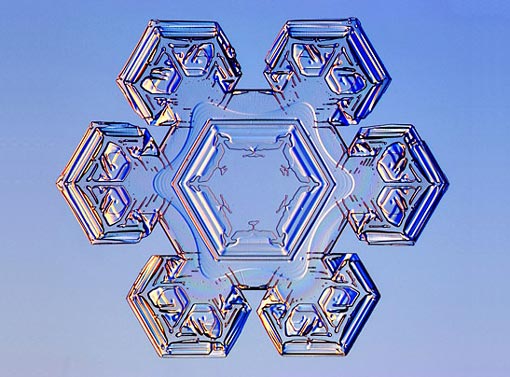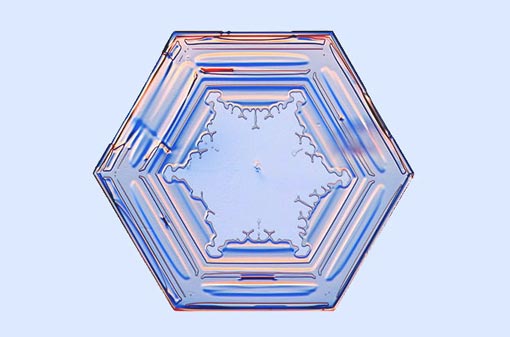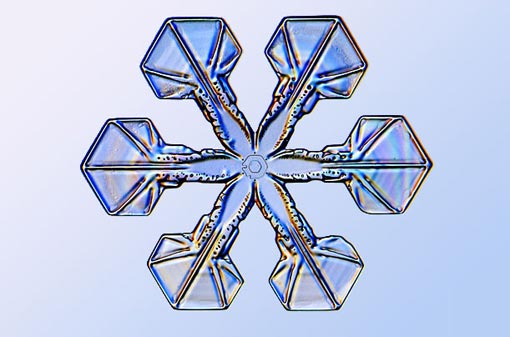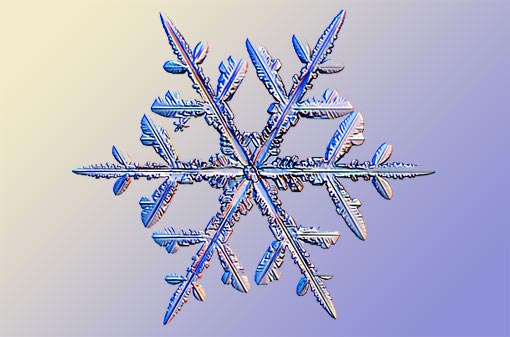You are hereArchive - Feb 24, 2009
Archive - Feb 24, 2009
Snowflakes are science and art: see ice crystals, simple, complex, the basics behind these miniature miracles of Nature

(quote)
Caltech physics professor Kenneth G. Libbrecht has turned his passion for the study of ice crystals into an art form. In his books and website, snowcrystals.com, he breaks down some of the basics behind these miniature miracles of nature
Stellar Plates
These common snowflakes (above) are thin, plate-like crystals with six broad arms that form a star-like shape. Shapes like these form around 28 degrees Fahrenheit, while columns and slender needles appear near 23 degrees. Plates and stars again form near 5 degrees Fahrenheit.

Simple Prisms
Snowflakes are not frozen raindrops (that is better known as sleet). They form when water vapor condenses directly into ice, which happens in the clouds. In their most basic form, snow crystals are hexagonal prisms like the sample, above, but other, more complex forms are famously possible.

Sectored Plates
The simplest sectored plates are hexagonal crystals that are divided into six equal pieces, like the slices of a pie. More complex specimens show prominent ridges on broad, flat branches.



















